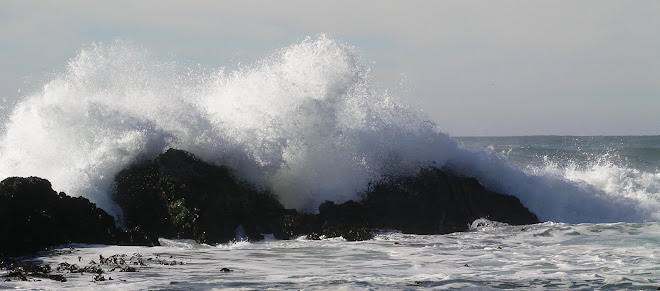

WOW!!!!! A (Southern)White Rhino. One of the big 5 that I knew I would like to see but just didn't expect to. It is the more common of they types of rhino, but there are still only ~10,000 estimated left in the world.
On June 11 we were heading out to visit a local school and village just outside of Hwange National Park in Zimbabwe. About 10-15 minutes out of camp a call came over the radio in the jeep that a white rhino had been spotted just outside of camp and was wandering around in a large field. Our driver told us to hold on tight and we took off across the rough dirt tracks of the bush at ridiculous speed. (Actually, the drive was a lot of fun--very like the Indiana Jones ride at Disneyland!) We got back to camp in a few minutes and lo and behold, there in the distance was rhino number 25! Hwange had LOTS of problems with poaching and they didn't have the security to protect the rhinos so they shipped them all over to a smaller park where they could protect them and work on a breeding program. Well, it seems the program worked as they have so many that the smaller park had too many and they have started re-introducing them into Hwange (where they have better security now). They will not say how many they have re-introduced to protect them (a few have been poached--mostly to use their horns for knife handles) but this guy was number 25 (as determined by his ear notches--The code is
here).
We stopped a good way away form him and though he saw us (and the 2 other trucks) he really didn't seem to care that we were there and just keep grazing his way across the field. He actually ended up coming within about 20 meters of our truck, passing just behind us. Needless to say I took quite a few pictures. Here are just a couple of my favorites.
Every wonder why they are called White and Black rhinos? Here is what
Wikipedia has to say about it:
A popular theory of the origins of the name White Rhinoceros is a mistranslation from
Dutch into
Afrikaans and
English. The Afrikaans word "wit", meaning "white" in English is said to have been derived by mistranslation of the Dutch word "wijd", which means "wide" in English and is spelt "wyd" in Afrikaans. The word "wide" refers to the width of the Rhinoceros mouth. So early European settlers in South Africa misinterpreted the "wyd" for "white" and the rhino with the wide mouth ended up being called the White Rhino and the other one, with the narrow pointed mouth, was called the
Black Rhinoceros. A review of Dutch and Afrikaans literature about the rhinoceros has also failed to produce any evidence that the word
wyd was ever used to describe the rhino.
[2] Other popular theories suggest the name comes from its wide appearance throughout Africa, its colour due to wallowing in calcerous soil or bird droppings or because of the lighter colour of its horn. An alternative common name for the white rhinoceros, more accurate but rarely used, is the square-lipped rhinoceros. The White Rhinoceros' generic name,
Ceratotherium, given by the zoologist
John Edward Gray in 1868,
[3] is derived from the
Greek terms
keras "horn" and
therion "beast".
Simum, is derived from the Greek term
simus, meaning "flat nosed".
 Can you scratch just a....little...bit....lower????
Can you scratch just a....little...bit....lower????











